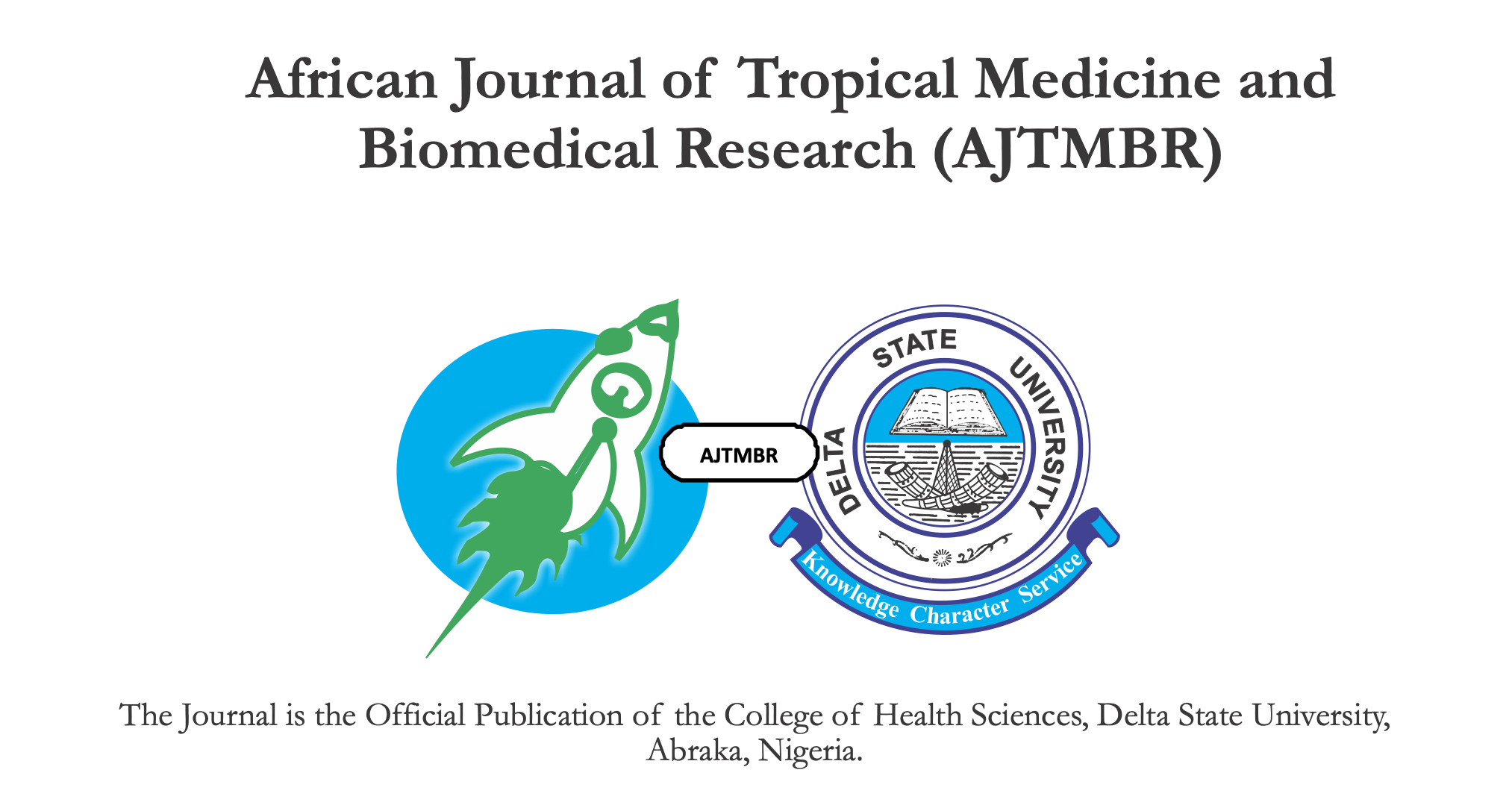Angular Profile of the Knees of Nigerian Children in Lagos, Nigeria
Keywords:
Angular Profiles, Orthopaedic, kneesAbstract
Introduction: Angular misalignments of the knees in children are common in our environment. Many of these variations fall within normal limits. Only a few will require further investigations and treatment. During normal growth, physiological changes occur in the angle of the knees as the child grows. This phenomenon has been investigated and documented by scholars in different environments. Some similarities and differences have been noted between children of different races and environments by various authors.
Aim: This study strives to investigate the presence or absence of these findings in Nigerian children and provide local reference data to aid the management of similar cases in our environment.
Methodology: The clinical methods of assessment of knee angles were used in this study.Six hundred children aged 3-8 years (age last birthday) were selected from public and private nursery/primary schools in Lagos metropolis and had their tibiofemoral angles measured with a goniometer and their intercondylar/intermalleolar distances measured with an inextensible taperule.
Results: The 600 children were divided into six age groups for the purpose of data collation and analysis. The mean tibiofemoral angle for the six age groups was 6.0 + 8.1. A valgus inclination of 8.4 + 7.2 was noted at 3 years of age which decreased to 3.4 + 8.6o at 8 years of age. The intercondylar/intermalleolar distance was 2.5 + 3.4cm at age 3 years and 0.7 + 3.3cm at 8 years of age. The tibiofemoral angle was found to be quite correlated with the intercondylar/inermalleolar distances with a correlation coefficient of r=0.765.
Conclusion: Compared with figures from previous similar studies in other places, most of the parameters show a similar pattern of changes with growth but the degree and timing of the changes show some basic differences attributable to racial/genetic factors, methods of measurements, and other environmental factors. Figures gotten in this study is of use for clinical reference when similar cases present in our clinics in this sub-region .
References
Sass P, Hassan G.
abnormalities in children. Am. Fam. Physician 2003; 68:461-468.
Cheng JCY, Chan PS, Chiang SC, Hui PW. Angular and rotational profile of the lower limb in 2630 Chinese children. J. Paediatr. Orthop 1991; 11: 154-161.
Solomon S, Warwick D, Nagayam S. Appley’s system of Orthopaedics and fractures. 8th ed, London;EdwardArnold. 2001;449-484.
Chapman MW.(Ed). Chapman’s Orthopaedic surgery. 2nd ed. Philadelphia, J.B. Lipincot. Co; 1996; 1345-1357.
SaleniusP,VankkaE.Tibiofemoralanglein children. J. Bone Joint Surg 1975; 57-A: 259- 261.
Badru OS. Changes in knee angles in Nigerian Children with growth. Part II Dissertation (FMCS) to the National Postgraduate Medical College of Nigeria. May, 2000; 1-42. (Unpublished)
Oginni LM, Badru OS, Sharp CA, Davie MWJ, Worsfold M. Knee angles and rickets in Nigerian children. J Paediatr. Orthop. 2004; 24: 403-407.
Omololu B, Tella A, Ogunsola SO, Adeyemo AA, Adebisi A, Alonge TO, et al. Normal values of knee angle, intercondylar and intermalleolar distances in Nigerian children. West Afr J Med 2003; 22: 301-304.
Harcourt SL. Clinical assessment of tibiofemoral Angle in children 4-7 years of age in Enugu. Part II Dissertation (FMCS) to the National Postgraduate Medical College of Nigeria May,2004; 1-46.(Unpublished).
Solagberu BA. Angular deformities of the knee in children. The Nigerian Journal of Surgical Research 2000; 2: 62-67.
Salawu SAI. Knock knee and bow leg in Zaria. Orient Journal of Medicine 1992; 4: 69-72.
Cahuzac JPH, Vardon D, De Gauzy JS. Development of clinical tibiofemoral angle in normal adolescents. J. Bone Joint Surg 1995; 77-B: 729-732.
Smyth EHJ. Windswept Deformity. J. Bone Joint Surg 1980; 62-B: 166-167.
Arazi M, Ogun TC, Memik R. Normal development of tibiofemoral angle in children: A clinical study of 590 normal subjects from 3-17 years of age. J. Paediatr. Orthop 2001; 21: 264-267.
Heath CH, Staheli LT. Normal limits of knee angle in white children-genu varum and valgum. J. Paediatr. Orthop 1993; 13: 259-
Bohm M. Infantile deformities of the knee and hip. J. Bone Joint Surg 1933; 15-A: 574- 578.
Araoye MO, Research methodology with statistics for health and social sciences., 1st ed.,Ilorin, Nathadex Publishers . 2003;130- 258.
Bankole MA(ed). Handbook of research methods in Medicine. Lagos, Nigerain Educational Research & Development Council 1991; 127-211.
Knight RA. Developmental deformities of the lower extremities. J. Bone Joint Surg 1954; 36-A: 521-527.
Levine AM, Drennan JC. Physiological bowing and tibia vara: The metaphyseal- diaphyseal angle in the measurement of bowleg deformities. J. Bone Joint Surg 1982; 64-A: 1158-1162.

Downloads
Published
Issue
Section
License

This work is licensed under a Creative Commons Attribution-NoDerivatives 4.0 International License.
Key Terms:
- Attribution: You must give appropriate credit to the original creator.
- NonCommercial: You may not use the material for commercial purposes.
- ShareAlike: If you remix, transform, or build upon the material, you must distribute your contributions under the same license as the original.
- No additional restrictions: You may not apply legal terms or technological measures that legally restrict others from doing anything the license permits.
For full details, please review the Complete License Terms.



